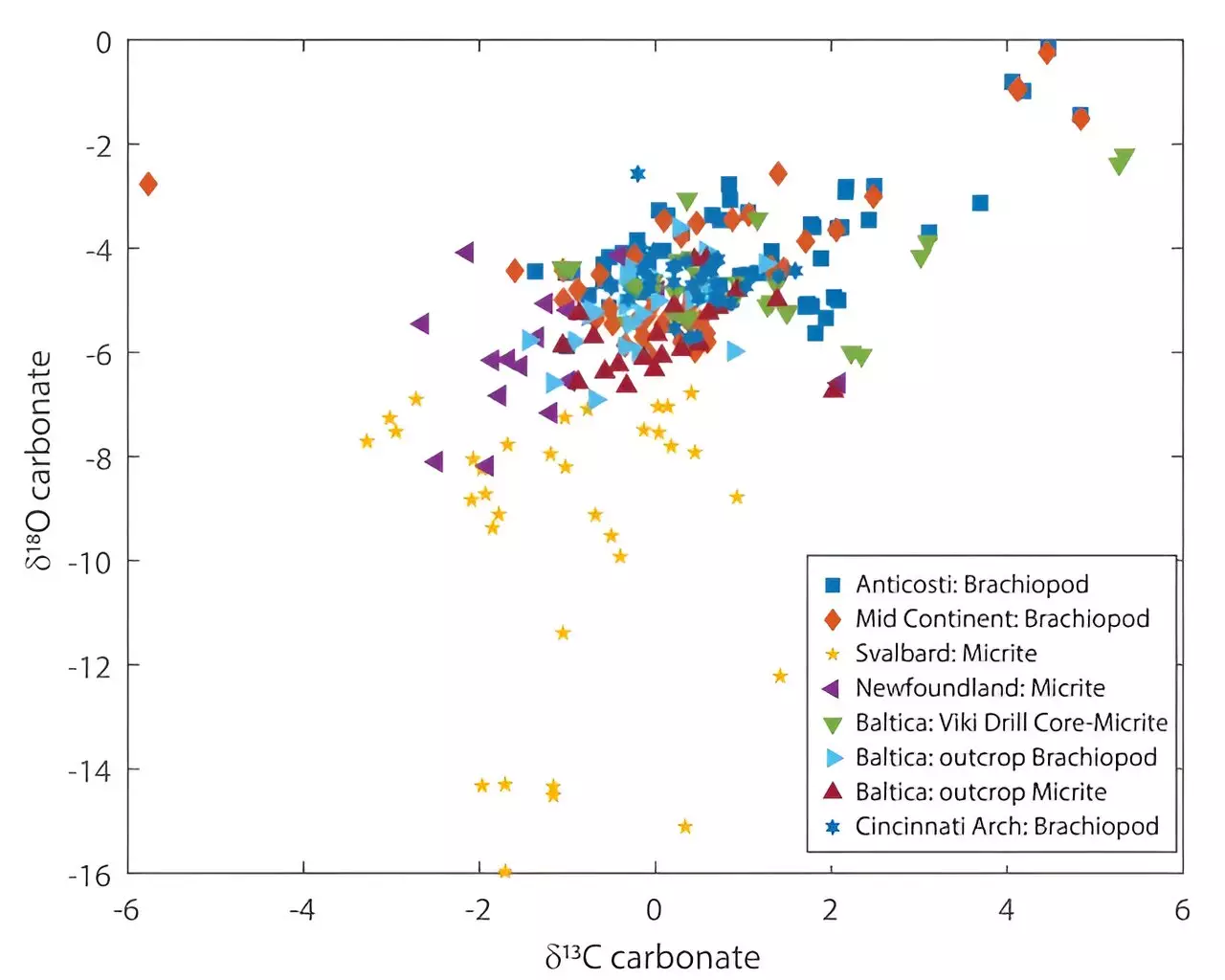Throughout the annals of Earth’s history, scientists have tirelessly explored the intricate dynamics of our planet’s oceans. A significant area of research has focused on the isotopic composition of seawater, particularly the ratio of oxygen isotopes 16O and 18O, denoted as δ18O. Recent investigations reveal compelling evidence suggesting a gradual transformation in this ratio over the last 540 million years. This phenomenon, explored by an international cadre of marine and Earth scientists, is reported in a study published in the esteemed *Proceedings of the National Academy of Sciences*.
The discourse surrounding changes in the δ18O ratio has been rife with contention over recent decades. Some scientists argue that the isotopic balance in seawater has remained static, positing that modern oceans mirror those of ancient times. In stark contrast, a growing faction asserts that variations in this ratio have indeed occurred, influencing interpretations of Earth’s climatic conditions during different geological epochs. The recent study adds robust evidence to the latter perspective, prompting a reevaluation of past temperatures and oceanic behaviors.
To substantiate their claims, the research team conducted meticulous analyses on rock samples collected from the Ordovician period, specifically in Estonia’s Baltic basin. Utilizing cutting-edge clumped isotope thermometry— an advanced technique that quantifies the association of carbon isotopes with oxygen isotopes in mineral forms— the researchers unveiled new insights into the historical temperature of seawater. This method hinges on the principle that the isotopic bonding process is contingent on temperature, yielding invaluable data about the geochemical conditions of ancient oceans.
The analysis yielded striking revelations: the researchers concluded that during the Ordovician period, the isotopic composition of seawater was not only lower in δ18O but also cooler than previous hypotheses indicated. This pivotal finding suggests that the δ18O ratio has undergone a slow evolution over countless millennia, challenging preexisting models of ocean temperatures. Understanding this shift is crucial as it bears implications for reconstructing Earth’s climatic history and informs predictions about future climatic trends.
While these findings significantly bolster the argument for historical changes in the δ18O ratio, they stop short of providing irrefutable proof. As the scientific community grapples with these complex interactions in ocean chemistry, the discourse is expected to persist, highlighting the need for further empirical evidence. Researchers posit that two primary mechanisms drive alterations in the δ18O ratio: hydrothermal activity resulting from oceanic rock alterations and, to a lesser extent, the weathering processes associated with continental crust. As science advances, additional studies will be essential to dissect these complex geochemical dynamics fully.
Ultimately, this research underscores the importance of rigorous scientific inquiry and discussion. As we seek to understand our planet’s past, the shifting landscapes of ocean chemistry remain a critical area of exploration. The conversation surrounding δ18O ratios in seawater will undoubtedly evolve as new findings emerge, revealing the layered history of Earth’s oceans and our planet’s climate system.


Leave a Reply